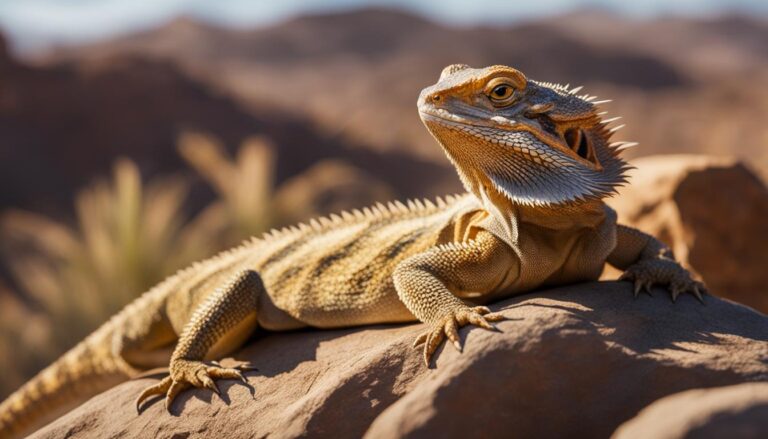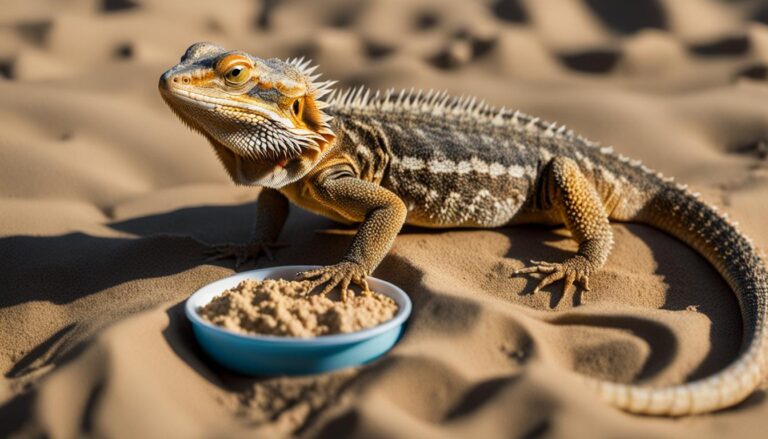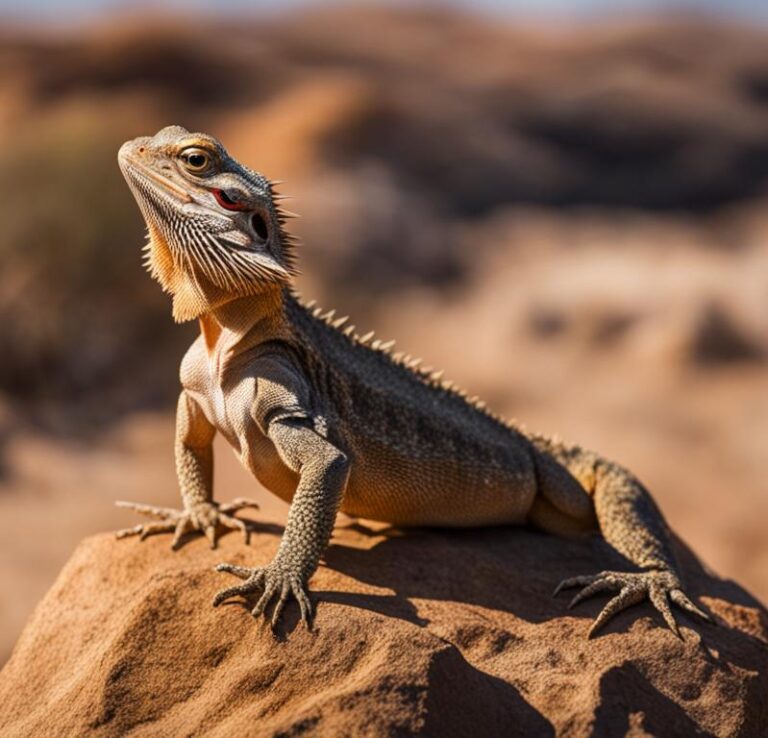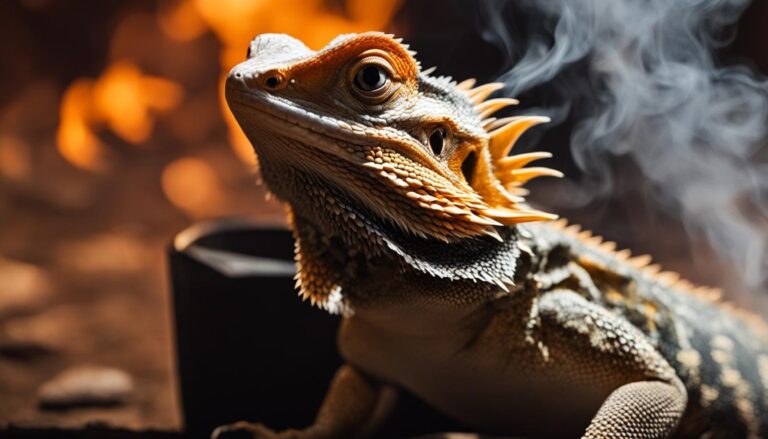Where Do Bearded Dragons Sleep?
Bearded dragons are fascinating reptiles that have become popular pets in recent years. These reptiles are native to the arid regions of Australia and are known for their unique appearance, with spiky scales and a beard-like flap of skin under their chin. One aspect of their behavior that many owners are curious about is their sleeping habits. Do bearded dragons sleep like humans do? How much sleep do they need? In this article, we will explore the sleeping patterns of bearded dragons and provide tips on how to create a comfortable sleeping environment for them.
Table of Contents
The Natural Habitat of Bearded Dragons and Their Sleeping Preferences
In the wild, bearded dragons inhabit the arid regions of Australia, where they spend their days basking in the sun and hunting for food. At night, they retreat to burrows or hide among rocks to sleep and rest. This natural habitat provides them with a safe and secure sleeping environment, away from predators and extreme temperatures.
The sleeping preferences of bearded dragons are influenced by their natural habitat. They are diurnal animals, which means they are most active during the day and sleep at night. However, their sleep patterns can vary depending on factors such as temperature, lighting, and diet. It is important for owners to understand these preferences in order to provide a suitable sleeping environment for their bearded dragon.
Do Bearded Dragons Need a Specific Sleeping Environment?
Yes, bearded dragons do require a specific sleeping environment in order to get a good night’s sleep. Providing a comfortable sleeping area for your bearded dragon is essential for their overall health and well-being. Just like humans, bearded dragons need a quiet and dark environment to promote restful sleep.
A specific sleeping environment can benefit their health in several ways. Firstly, it helps regulate their body temperature during the night. Bearded dragons are ectothermic, which means they rely on external sources of heat to regulate their body temperature. By providing a warm and cozy sleeping area, you can help them maintain their body temperature and ensure they are comfortable throughout the night.
Secondly, a specific sleeping environment can reduce stress and anxiety in bearded dragons. These reptiles are sensitive to their surroundings and can become stressed if they are exposed to loud noises or bright lights during sleep. By creating a calm and peaceful sleeping environment, you can help them feel safe and secure, which in turn promotes better sleep.
Setting Up a Comfortable Sleeping Area for Your Bearded Dragon
To set up a comfortable sleeping area for your bearded dragon, there are a few key factors to consider. Firstly, you will need to provide a suitable enclosure or tank for your bearded dragon to sleep in. The enclosure should be spacious enough for them to move around comfortably, with plenty of hiding spots and climbing opportunities.
Next, you will need to provide a soft and cozy substrate for your bearded dragon to sleep on. Avoid using substrates that can cause impaction, such as loose sand or gravel. Instead, opt for reptile carpet or paper towels as a safe and comfortable bedding option.
It is also important to provide a safe and secure sleeping area for your bearded dragon. This can be achieved by placing rocks or logs in the enclosure for them to hide under or climb on. Bearded dragons are known to be excellent climbers, so providing vertical space is essential for their well-being.
The Importance of Temperature and Lighting for Bearded Dragon Sleep
Temperature and lighting play a crucial role in the sleep patterns of bearded dragons. These reptiles require specific temperature ranges in order to regulate their body temperature and promote restful sleep.
During the day, bearded dragons require a basking spot with temperatures ranging from 95-105°F (35-40°C). This allows them to absorb heat and regulate their body temperature. At night, the temperature should drop to around 70-75°F (21-24°C) to mimic their natural sleeping conditions.
In addition to temperature, lighting is also important for bearded dragon sleep. These reptiles require a regular day-night cycle to maintain their circadian rhythm. During the day, provide them with a UVB light source to simulate natural sunlight. This helps them produce vitamin D3, which is essential for calcium absorption and overall health. At night, turn off all lights in the enclosure to create a dark and quiet sleeping environment.
Creating a Dark and Quiet Environment for Your Bearded Dragon to Sleep
Creating a dark and quiet environment for your bearded dragon to sleep is essential for their well-being. Bearded dragons are sensitive to light and noise, and exposure to these stimuli during sleep can disrupt their sleep patterns and cause stress.
To create a dark environment, turn off all lights in the enclosure at night. This includes any ambient light from outside sources, such as streetlights or room lights. Covering the enclosure with a dark cloth or using blackout curtains can also help block out any unwanted light.
In addition to darkness, it is important to create a quiet environment for your bearded dragon to sleep. Avoid placing their enclosure in a noisy area of your home, such as near a television or stereo. If necessary, use soundproofing materials or move the enclosure to a quieter location.
The Role of Diet and Nutrition in Bearded Dragon Sleep Patterns
Diet and nutrition play a significant role in the sleep patterns of bearded dragons. These reptiles require a balanced diet that provides them with the necessary nutrients for growth and overall health.
Bearded dragons are omnivorous, which means they eat both plant matter and small insects. Their diet should consist of a variety of leafy greens, vegetables, fruits, and protein sources such as crickets or mealworms. It is important to provide a balanced diet that meets their nutritional needs.
Feeding your bearded dragon a proper diet can help promote better sleep. A well-fed bearded dragon is more likely to feel satisfied and content, which in turn promotes restful sleep. Avoid overfeeding or underfeeding your bearded dragon, as both can lead to health issues and disrupt their sleep patterns.
Common Sleeping Problems in Bearded Dragons and How to Address Them
While bearded dragons are generally good sleepers, they can experience sleep problems from time to time. Some common sleeping problems in bearded dragons include insomnia, restless sleep, and brumation.
Insomnia in bearded dragons can be caused by factors such as improper temperature or lighting, stress, or health issues. To address insomnia, ensure that the sleeping environment is comfortable and free from any disturbances. Check the temperature and lighting in the enclosure to make sure they are within the appropriate range. If the problem persists, consult a veterinarian for further evaluation.
Restless sleep in bearded dragons can be caused by discomfort or stress. Ensure that the sleeping area is soft and cozy, with plenty of hiding spots and climbing opportunities. If your bearded dragon is showing signs of stress, such as pacing or glass surfing, try to identify and eliminate the source of stress.
Brumation is a natural process that occurs in bearded dragons during the winter months. It is similar to hibernation in other animals and involves a period of decreased activity and sleep. During brumation, bearded dragons may sleep for extended periods of time and have reduced appetite. It is important to monitor their health during this time and provide them with a safe and comfortable sleeping area.
Tips for Monitoring Your Bearded Dragon’s Sleep and Health
Monitoring your bearded dragon’s sleep and health is essential for their overall well-being. Here are some tips to help you keep track of their sleep patterns and detect any potential health issues:
– Observe their sleeping habits: Take note of when and how long your bearded dragon sleeps. This will help you establish their normal sleep patterns and detect any changes or abnormalities.
– Monitor their appetite: Bearded dragons are known for their healthy appetite. If your bearded dragon is suddenly eating less or refusing food, it could be a sign of an underlying health issue.
– Check their body condition: Regularly inspect your bearded dragon’s body for any signs of weight loss, skin abnormalities, or injuries. These can be indicators of health problems that may affect their sleep.
– Schedule regular check-ups with a veterinarian: Regular veterinary check-ups are important for maintaining your bearded dragon’s health. A veterinarian can perform a thorough examination and provide guidance on diet, habitat, and overall care.
Providing the Best Sleeping Conditions for Your Bearded Dragon
In conclusion, understanding the sleeping habits of bearded dragons is crucial for providing them with a comfortable sleeping environment. By creating a specific sleeping area that mimics their natural habitat, maintaining the ideal temperature and lighting, and ensuring they receive a balanced diet, you can help promote restful sleep and overall well-being for your bearded dragon.
Remember to monitor their sleep patterns and health regularly, and consult a veterinarian if you notice any changes or concerns. By implementing the tips provided in this article, you can ensure that your bearded dragon gets the best possible sleep and lives a happy and healthy life.
If you’re interested in learning more about the sleeping habits of reptiles, you might also enjoy reading the article “Where Do Iguanas Sleep?” on Reptile Friend. This informative piece explores the various sleeping behaviors and preferences of iguanas, shedding light on their unique sleep patterns and habitats. Discover where these fascinating creatures choose to rest and how their sleeping habits differ from other reptiles. Read more






